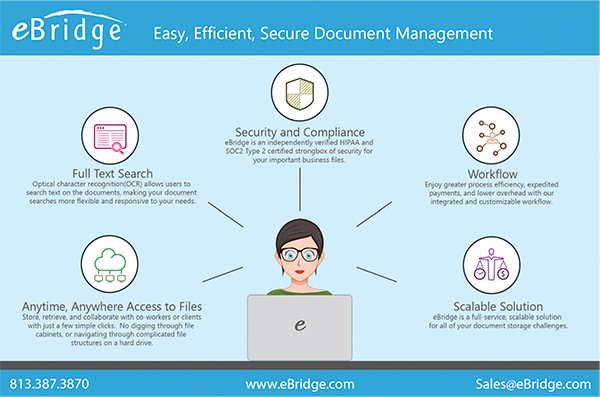Even Among the Already Large Amount of Information In the Industry, Data Is the Way Out of the Problem. "When I first started out, you could mail out a bill and payers would cover 80-100 percent of what you billed,” says Josh Santillan, chief operations officer for Medical Billing Unlimited. “It was pretty straightforward. You didn’t have any denials. Now you have denials for CCI edits, LCDs, and specific CPT codes for each payer, and fixing claims is a lot of work on the back end. Claim denials can cause payments to be delayed for six to eight weeks or more.” This quote from a hardworking billing professional sums up the daily dilemma for billing companies and independent practice billing departments across the United States. With the demands of value-based reimbursement looming and the constantly increasing paperwork imposed on all healthcare practices, billing companies and practice billing departments are constantly looking for ways to boost efficiency, enhance collections, and increase their value to their practices and the ones they serve. When every office seems to be drowning in information and its management already, it appears contradictory to suggest that data is the way out of the problem—but those are the facts. Large healthcare networks and billing companies have already recognized that data analytics can put them ahead of the pack in making informed decisions about patients, practices, and payers. They’re implementing data analytics professionals and departments in order to give billers the insights they need to optimize reimbursements and revenues. Independent practices, however, haven’t had the personnel or resources to take advantage of the data analytics revolution. Already overworked billing professionals have been stuck with cumbersome manual practices. To determine cross-practice productivity, the biller has had to export data for each practice monthly, then aggregate that into Excel and put it into pivot tables and chart it—just one of dozens of time-consuming tasks. Now that’s changing. Medical practice software is available with practice management software integrated into the EHRs and billing programs that the independent billing professionals are already using. This data analytics software captures more data than ever before, but it makes it easily accessible without the need for IT professionals or analysts that independent practices don’t have. This means billers can get the right data in minutes (rather than hours, days, or never) and can spend their time uncovering revenue opportunities. After implementing a robust data analytics module at Medical Billing Unlimited, Josh was able to reduce the time spent on monthly reporting for their practices from almost an entire week to only four hours. Now Josh can repurpose his time elsewhere. Analytics for independent practices, however, are all over the map in terms of value and limitations, so billers need to review closely to be sure what they’re getting is going to give them the knowledge they need. Beware of a lack of transparency regarding formulas and definitions. For example, look at net collection rate. A basic tool calculates this rate using an industry standard formula but doesn’t provide any transparency into the actual data and time periods that are used. Without this insight and information transparency, it becomes difficult to draw accurate conclusions and make important decisions related to performance, payroll, and more. Basic analytics tools also tend to provide a summary view without the ability to drill down into the details. For example, billers may be able to view a sum of payments each month but not dive into a specific line item at the claim level to see precisely where that revenue originates and what services or procedures are denied. A really robust analytics tool is highly transparent. It will tell users how things are calculated and give them access to the source data. If billers want to do their own calculations manually, they can more easily verify that the information is correct and gain confidence in the analytics tools. Robust analytics tools designed with independent practices in mind offer out-of-the-box reports that make the tool immediately useful, while billing professionals go to work on customization. Having these tools at their fingertips, billing professionals can realize greater revenue for their practices and lower expenses through efficiency in their business operations in a number of ways.
There’s a great operational benefit to having advanced analytics capabilies. Beyond speeding up regular monthly reporting, like the vast improvement Medical Billing Unlimited has seen, and allowing a biller to deliver on highly customized requests, many practices and billing organizations are also achieving notable improvements in process efficiency by having the ability to use their data effectively. Saved subsets or bookmarks of data allow users to review staff productivity or view a summary of an account manager’s practices and drill this info all the way down to line item specific detail, if needed. Managers can easily identify the most valuable activities related to a practice or a billing team and produce a quick but detailed worklist to tackle A/R, denials, etc. Visibility and visualization of individual practice data helps billing professionals understand their practices more intimately so they can prioritize their work smartly. Using robust analytics for practice data to understand which codes or payers are their biggest moneymakers or have the highest net collection rate, billing managers make productive and targeted worklists for their teams in just minutes so their labor realizes the most revenue for the practice. This visibility also helps billing professionals like Josh play a consultative role in helping the practice prioritize their hiring, organizational, and marketing efforts. When billers can provide this kind of granular data, they become vital and integral partners to the clinicians in the growth and prosperity of the practice. Among the revenue optimizing insights that robust data analytics can uncover are easy ways to:
No matter how overburdened billers feel with the torrent of data they collect, the ability to answer questions like these and to customize and shape that data into the vital information they need is an advanced capability that takes billing professionals to the next level and secures their position as a vital resource to their clinicians. It’s a secret to success.
|


 Nitin Somalwar is vice president and general manager of the billing company channel, Kareo. More information can be found at www.kareo.com
Nitin Somalwar is vice president and general manager of the billing company channel, Kareo. More information can be found at www.kareo.com